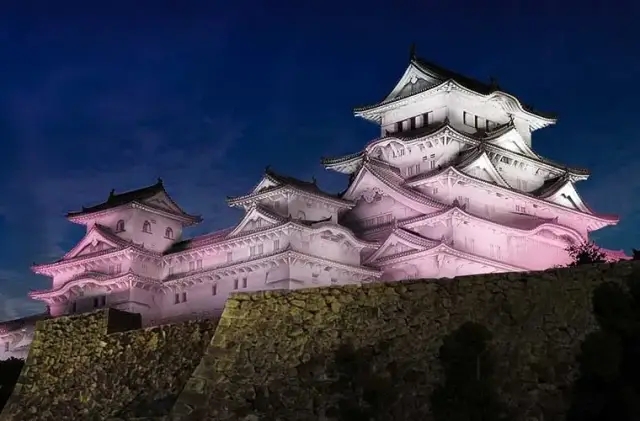https://www.dekitabi.com/itinerary/himeji-essential-tour
Himeji, a city renowned for its rich cultural heritage and historical landmarks, offers a captivating journey through Japan’s past. From the majestic Himeji Castle to the serene Engyoji Temple, the picturesque Kokoen, and the sacred Harima Kokusoja Shrine, each site reveals a unique facet of Japan’s illustrious history. Whether you’re a history buff, a culture enthusiast, or simply looking to explore Japan’s exquisite heritage, Himeji is a destination that promises to fascinate and inspire.
Himeji Castle: A Pinnacle of Japanese Architecture

https://www.dekitabi.com/attraction/himeji-castle
Often referred to as the “White Heron Castle” due to its brilliant white exterior, Himeji Castle is one of Japan’s most iconic landmarks. This UNESCO World Heritage Site, located in the heart of Himeji, is celebrated for its impressive architecture and well-preserved condition. Constructed in 1580, the castle stands as a testament to Japanese feudal history and design.
The castle’s intricate network of defensive structures, including its maze-like layout and towering walls, reflects advanced engineering of the period. Visitors can marvel at the elegant white façade and explore the castle’s extensive grounds, which include beautiful gardens and historical artifacts. As one of Japan’s few original castles to survive both natural disasters and wartime destruction, Himeji Castle provides a fascinating glimpse into Japan’s feudal era and its architectural prowess.
Engyoji Temple: A Tranquil Retreat on Mount Shosha

https://www.dekitabi.com/attraction/shoshazan-engyoji-temple
Nestled on Mount Shosha, Engyoji Temple offers a serene escape from the bustle of city life. This ancient temple complex, established in 966 AD, is renowned for its tranquil atmosphere and stunning views of the surrounding landscape. Engyoji is part of the Rinzai sect of Zen Buddhism and is known for its spiritual significance and historical treasures.
The temple’s layout, featuring traditional wooden structures and beautifully landscaped gardens, invites visitors to explore its serene environment. Highlights include the Sanboin Hall, which dates back to the 13th century, and the scenic walking paths that provide panoramic views of Himeji City and beyond. Engyoji Temple is also known for its role as a filming location for the movie “The Last Samurai,” adding a touch of cinematic charm to its historical allure.
Kokoen: A Japanese Garden Masterpiece

https://www.dekitabi.com/attraction/koko-en
Adjacent to Himeji Castle, Kokoen Garden is a beautifully curated Japanese garden that offers a peaceful retreat amidst its meticulously designed landscapes. Opened in 1992, Kokoen Garden is divided into nine distinct sections, each showcasing different styles of traditional Japanese garden design.
Visitors can wander through the serene paths, admire the elegant koi ponds, and enjoy the seasonal beauty of cherry blossoms, irises, and chrysanthemums. The garden’s design incorporates elements such as traditional tea houses, rock gardens, and flowing water features, creating a harmonious blend of nature and architecture. Kokoen provides a perfect complement to a visit to Himeji Castle, offering a tranquil setting for reflection and relaxation.
Harima Kokusoja Shrine: A Sacred Haven

https://www.dekitabi.com/attraction/itatehyozu-shrine-himeji
Harima Kokusoja Shrine, located in the western part of Himeji, is a significant Shinto shrine with deep historical roots. Dedicated to Kokuso, a revered figure in Shinto belief, the shrine has been a site of worship and pilgrimage for centuries. Its serene grounds and traditional Shinto architecture make it a captivating destination for those interested in Japan’s spiritual heritage.
The shrine is renowned for its beautiful torii gates, which mark the entrance to its sacred grounds, and its historical significance in local traditions. Visitors can participate in traditional Shinto rituals, explore the shrine’s tranquil surroundings, and gain insight into the spiritual practices that have shaped Japanese culture. Harima Kokusoja Shrine offers a unique opportunity to experience the spiritual side of Japan’s cultural landscape.
Conclusion
Himeji’s rich tapestry of historical and cultural landmarks—Himeji Castle, Engyoji Temple, Kokoen Garden, and Harima Kokusoja Shrine—provides an unforgettable experience for those seeking to delve into Japan’s past. Each site offers its own unique insights into the country’s architectural brilliance, spiritual traditions, and natural beauty. Exploring these treasures provides a deeper understanding of Japan’s heritage and invites visitors to appreciate the enduring legacy of its historical sites.


Leave a Reply